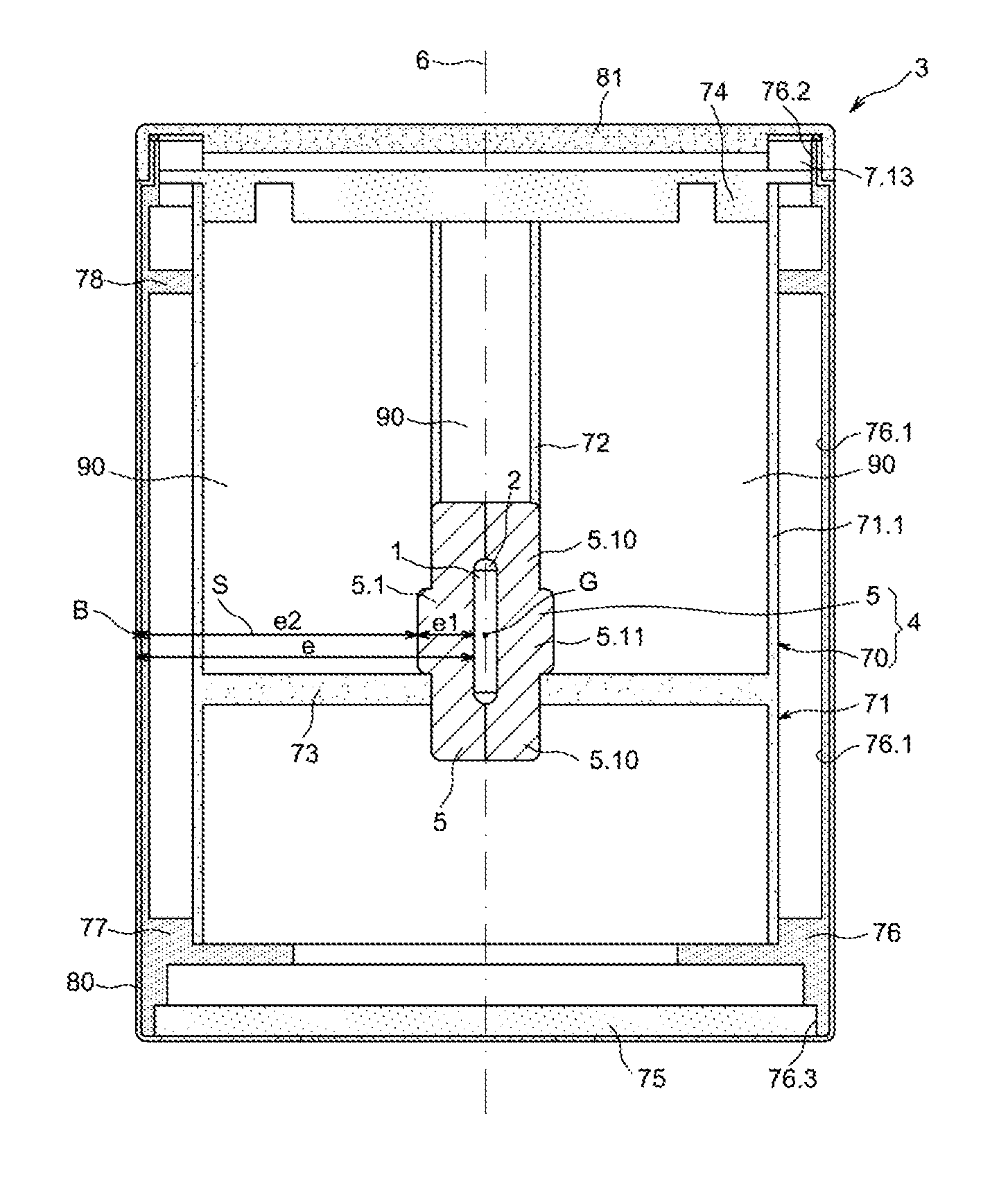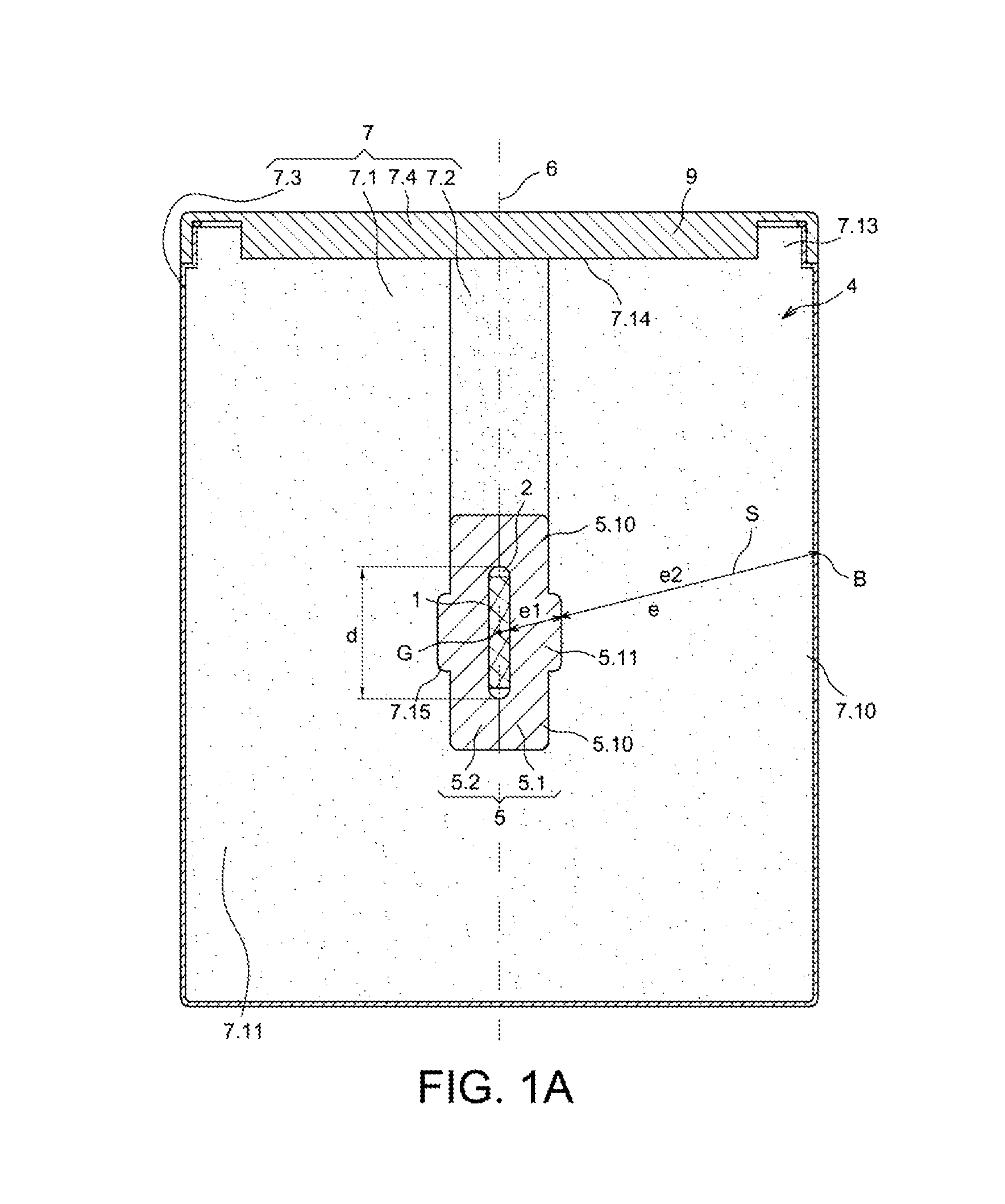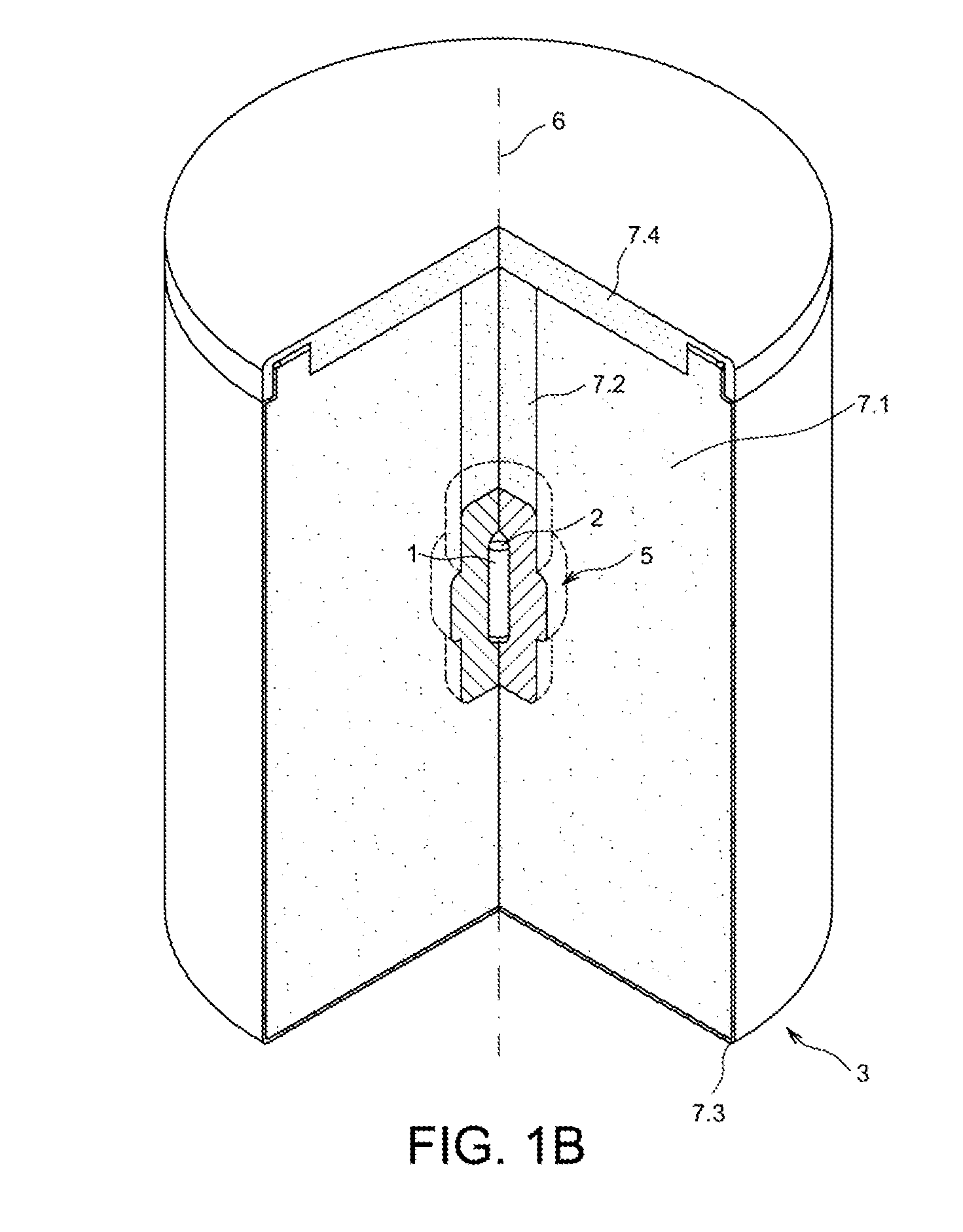Packaging for transporting and/or storing radioactive material
a technology for radioactive materials and packaging, applied in the direction of portable shielded containers, nuclear elements, shielding, etc., can solve the problems of inability to meet the requirements of the radiation protection structure, inability to meet the requirements, and inability to carry two to three times the weigh
- Summary
- Abstract
- Description
- Claims
- Application Information
AI Technical Summary
Benefits of technology
Problems solved by technology
Method used
Image
Examples
first embodiment
[0046]FIGS. 1A, 1B show respectively as a longitudinal cross-section and as a cut-away three-dimensional view a packaging in accordance with the invention;
[0047]FIGS. 2A1, 2A2, 2B1, 2B2, 2C1, 2C2, 2D1, 2D2 show as a longitudinal cross-section and as a cross-sectional section a plurality of packagings of prior art and according to the invention;
[0048]FIG. 3 is a graph that makes it possible to choose the thickness of the shielding portion and of the packaging in order to meet the criteria of mass and of dose rate;
[0049]FIG. 4 shows as a longitudinal cross-section another embodiment of the packaging according to the invention.
DETAILED DESCRIPTION OF PARTICULAR EMBODIMENTS
[0050]As has just been shown, the object of the invention is to optimize the mass of the packaging while meeting the criterion of dose rate at any point on its outer surface and the mechanical tests provided for by current regulations in terms of transporting radioactive material.
[0051]The underlying idea of the inve...
second embodiment
[0067]In a second embodiment, it can be formed from structural elements that alternate with air in such a way as to reduce the global mass without weakening the mechanical resistance of the packaging 3, as shown in FIG. 4.
[0068]In a first alternative of the first embodiment, on or several of these filling elements are made from a material of which the density is less than 0.5 such as wood, polyurethane foam, phenolic foam. Balsa has a density of a magnitude of 0.1.
[0069]In a second alternative of the first embodiment, one or several of these filling elements have a cell structure of the honeycomb type, of the corrugated cardboard type. In this latter case, the elements always have a density of less than 0.5, but the material from which they are made can have a density of more than 0.5, such as aluminum or cardboard.
[0070]In the example of FIGS. 1A, 1B, first filling elements of the distancing-effect portion 7 take the form of a hollow element 7.1 intended to house the shielding port...
PUM
 Login to View More
Login to View More Abstract
Description
Claims
Application Information
 Login to View More
Login to View More - R&D
- Intellectual Property
- Life Sciences
- Materials
- Tech Scout
- Unparalleled Data Quality
- Higher Quality Content
- 60% Fewer Hallucinations
Browse by: Latest US Patents, China's latest patents, Technical Efficacy Thesaurus, Application Domain, Technology Topic, Popular Technical Reports.
© 2025 PatSnap. All rights reserved.Legal|Privacy policy|Modern Slavery Act Transparency Statement|Sitemap|About US| Contact US: help@patsnap.com



